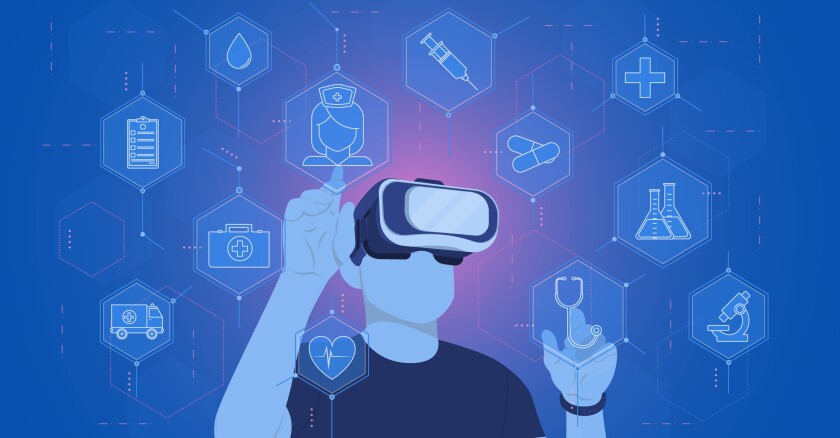Over the past year, several universities set out to launch their own metaversities to provide students and professors with “digital twin” campuses, where students can attend courses using Meta Quest 2 virtual reality headsets provided through a partnership with VictoryXR and Meta announced last summer. The partnership initially involved Morehouse College in Georgia, the University of Kansas School of Nursing, New Mexico State University, South Dakota State University, Florida A&M University, West Virginia University, Southwestern Oregon Community College, California State University, Alabama A&M University and University of Maryland Global Campus (UMGC), where students are now using the technology to attend a handful of courses from anywhere.
The initiative also announced a new cohort of metaversity projects in March, bringing in schools such as Loyola Marymount University in California, Cal State Northridge in California, Indiana Wesleyan University in Indiana, Metropolitan State University of Denver in Colorado, Florida A&M University in Florida, Lorain County Community College in Ohio, Jackson State University in Mississippi, North Carolina A&T State University in North Carolina and Northern Virginia Community College, among others.
According to Cynthia S. Teel, associate dean of academic and faculty affairs and a professor at the University of Kansas, the school has so far used the technology in undergraduate and advanced graduate assessment courses. Noting that the use of AR/VR assets for instruction has so far remained limited to those two areas, she said the school hopes to expand the use of AR/VR technology for “meaningful instruction” moving forward as students and faculty get more used to it.
“Students are interested in using VR technology once the necessary assets are developed. Faculty also learned that the time for faculty and student orientation to the technology is more extensive than had been originally planned. Faculty need additional time to learn about the technology, as they prepare for incorporating it into one or more courses,” Teel said in an email to Government Technology. “Students need additional time to learn about accessing the technology and becoming comfortable with manipulating the assets in the VR space before the full potential of VR in a learning environment will be realized. … [The school] plans to continue work in the VR space while also continuing to explore solutions to the challenges that were encountered in the previous academic year.”
The story is also fairly similar at South Dakota State University, an early adopter of AR/VR technology for classroom instruction. Gregory A. Heiberger, an associate dean of academics at the South Dakota State University College of Natural Sciences, said that while the project initially focused on content areas such as anatomy and organic chemistry, the university has also kept its use fairly limited and has similar plans to expand it in other areas.
Heiberger said that the university used VR headsets at first for organic chemistry and anatomy, but it plans to incorporate them into multiple chemistry classes, anatomy and an education course in the coming year. He said hundreds of students will be taking courses that make some use of AR/VR technologies moving ahead.
“We’re planning for this next academic year cycle to deploy Victory XR headsets into other spaces. Our [College of Education] or School of Design are places that are ripe [for AR/VR applications] and have a lot of interest, but just didn’t have the opportunity [yet],” he said. “Before the metaversity was announced, we had a handful of headsets — the metaversity [initiative gave us] 50 more headsets, but the departments and university have now invested in almost 100 additional headsets to be able to expand that.”
According to Dan Mintz, chair of the information technology department at UMGC, the online university is still learning how to make the most of the technology, adding that the school has had to send headsets to its remote student body, which has been somewhat of a logistical challenge. While the response to the tech has been mostly positive amid growing interest in AR/VR tools, he said the university is still getting a feel for its exact impact on student performance and engagement, as well as where it could be best utilized and most tied to the learning objectives of courses.
“Conceptually, we’re very experienced with online classes, but I think the [AR/VR] industry is relatively in its early days in terms of how to best utilize virtual and augmented reality in the teaching process,” he said. “Everything we do has to be thought of in terms of scale. … We just had to try it.”
He said the technology will have been used across more than 10 courses by the end of the summer, in subjects such as speech, human relations, biology, journalism and astronomy, and added that the university will experiment with using it elsewhere in the coming school year.
“The second year, we’ll be running additional experiments, and our hope is to then do program-wide implementations,” he said. “We would like to start expanding it some time during this next academic year, during the fall through summer. … Operationally, we’re still learning how to do it.”
Heiberger said VR technologies are likely to play a larger role in the future of education moving forward as the tech improves and as users become more accustomed to its classroom applications.
“I think healthy skepticism of new tech is good,” he said. “You have to align it with learning outcomes, and in our case, with [solving and working on] real-world problems.”









